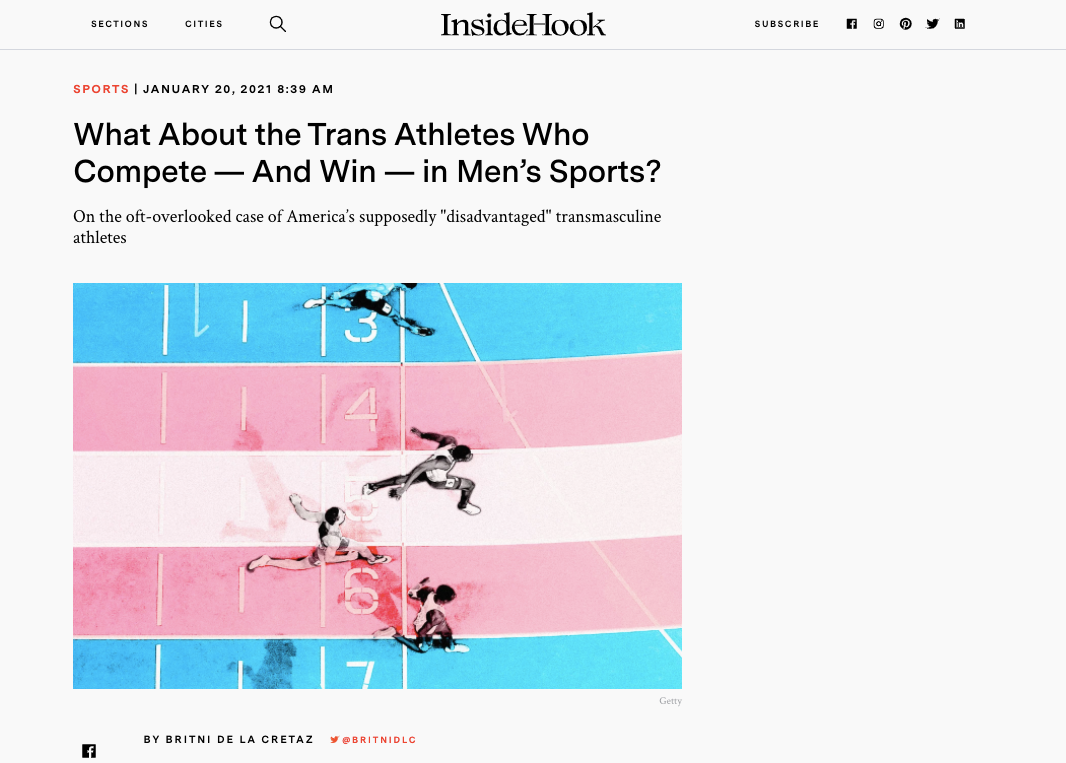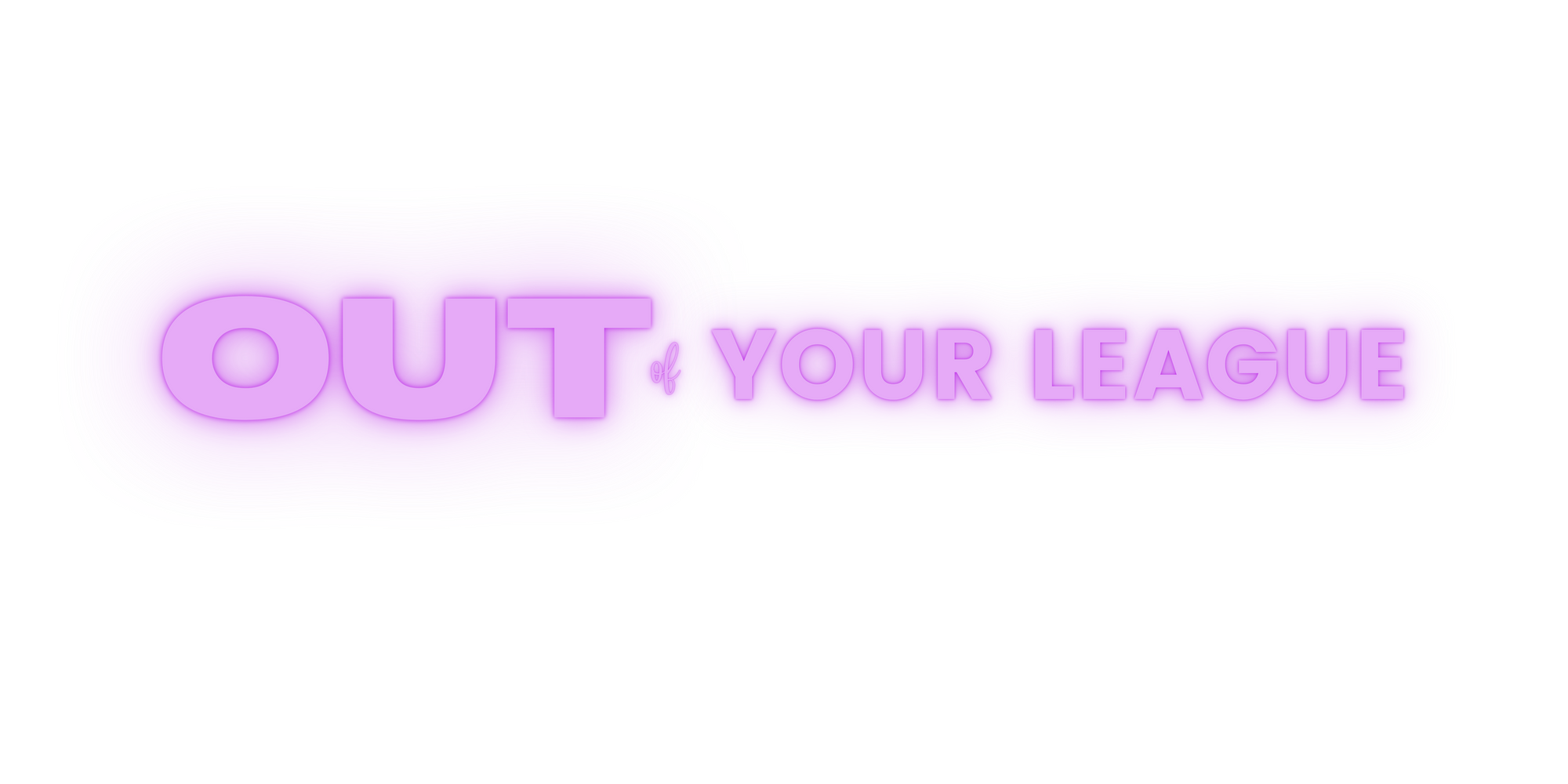the art of letting people speak for themselves
aka how to do ethical reporting on marginalized communities

I’ve been writing a lot of long, narrative features (also, a book!) that have yet to see the light of day. I’ve been plugging away, filing stories into a holding pattern, waiting for the day they are released into the world and I can finally invoice for the work I finished several months earlier (lolsob hashtag freelancelife).
One of those pieces published this week. The story, my first for Inside Hook, is about the trans boys who are all-too-often invisibilized and underestimated in conversations about trans athletes. It dropped on Inauguration Day and I was worried it would be swallowed up by the news cycle but I’ve been bowled over by the level of traction and support the piece has received.

With big stories like this, I often give a little story-behind-the-story, and I’m going to do that here. I did not pitch this piece. Last fall, I received an email from Jason Diamond, who was editing for Inside Hook at the time. Jason had edited me during his time as the sports editor at Rolling Stone. When Inside Hook decided they wanted to do a piece about trans boys competing in athletics, Jason recommended me to write it.
The amazing thing about my collaboration with the editors at Inside Hook is that they treated me like the subject expert they hired me to be. What I mean by that is, aside from telling me they wanted to highlight or feature transmasculine youth in sports in a positive light, they didn’t tell me what the story should look like. They let me dictate that based on my reporting and knowledge of the landscape of coverage. I’m incredibly grateful, especially to Inside Hook’s EIC, Walker Loetscher, for that confidence in my abilities and for the freedom to let the piece go where I thought it should.
This brings me to my sourcing, and the reason I knew exactly what shape this story should take. Often, when (cishet) people write about the trans and/or queer community, they fail to center the voices of those directly impacted. Instead, they interview cis “experts” on trans issues, or they equate a cis gay “LGBTQ expert” as also being an expert on the trans community, or they interview transphobes for a “balanced” perspective. A slew of recent writing proves that to be the case: a piece for The Athletic that talked about the slow path to queer acceptance in Major League Baseball that utilized queer pain and death for clicks and failed to center the voices of queer folks; the well-received-by cis-readers piece for The Cut about J.K. Rowling that quoted hardly any trans people and zero trans women, despite Rowling’s rhetoric directly impacting trans women the most harshly; and Masha Gessen’s recent piece for The New Yorker that failed to interview any trans subjects but did interview transphobes.
When I set out to source this piece, I was determined not just to talk to young transmasculine athletes about their lived experiences, but to ensure that the expert sources in my story were transmasc, too, whenever possible. Anyone who says they can’t find an expert source who happens to be trans is lying; they just didn’t look hard enough. Sourcing directly from the community the story was about allowed for several things to happen:
- it meant that my story could be nuanced in ways it otherwise might not be because the people I spoke to had lived experience from which to speak
- they could tell me what the story needed to look like. not directly, of course. That’s my job as a writer. But as a reporter, all I had to do was listen to what my sources were telling me about their frustrations, about the assumptions made about them, and, most importantly, what they felt most reporting about this issue got wrong. They were telling me what was missing from the narrative, all I had to do was believe them and put that on the page.
- transmasculine people got to speak for themselves instead of having someone else speak for them.
This isn’t rocket science to me, but most reporting about the LGBTQ community, and the trans community, in particular, makes me wonder if maybe it is. As a journalist, I feel like my job is to most accurately represent my sources and to tell the truest story I can. Ethically, in order to do that, I need to trust the community my story is about to be the experts on themselves. In a story about trans people, a good rule is that as many sources as possible should be trans, and there should, at a minimum, be more trans voices cited in the story than cis ones. There’s also no need—ever—to hear from transphobes (aka “gender critical feminists” aka “anti-trans activists”) in stories about trans people. Human rights are never up for debate and giving hate a platform actively causes harm. It’s not “balanced,” it’s violence.
I’m trans, yes. But I’m not a trans boy or a trans man in sports; I cannot speak to their experience, nor would I try to. They are perfectly capable of speaking for themselves. My job as a journalist is to provide that platform. I’m under no illusions that I do this perfectly; like anyone else, I have a lot to learn and my work is constantly evolving. But I do believe it is the only ethical way to report.
Jane McManus, one of my favorite sportswriters, shared my story on Twitter and made this observation about what it accomplished:
When you center the. voices of cis sources in a story, you are centering cis perspectives. The story then becomes about what trans inclusion means for cis people, rather than what it means for trans people—the people who are actually impacted by exclusionary policies.
My hope with this piece was to let the all-too-often invisible trans boys in sports get some shine and share their own experiences. But, more than that, it was to not get bogged down in discussions about body parts and hormones. Often, those things are a distraction from the real issues at hand. They dehumanize the subjects—in this case, children—by reducing them to their bodies. Trans kids are not a danger to cis kids, they are children who just want the same opportunities as their peers. That reality gets lost when we talk about trans people only in relation to what their bodies look like.
I hope you’ll read the piece. Trans kids are continuing to be attacked in the courts; allowing their full humanity to exist is imperative. And if you ever have an assignment to report on a marginalized community, I’ll offer you a pro-tip: source directly from the community itself. Not only is it the ethical thing to do, but your story will be so much better for it.
Are You Ready For Some Whcky?
I’ve never really gotten into hockey. Growing up, my grandpa had season tickets to Florida Panthers games, so I went to a not-insignificant number of games when I was a kid. I can follow the action on the ice and understand what’s happening when I watch a game, but I couldn’t name a single position and I definitely can’t name a current NHL player. I can name a few NWHL players and have gone to a single Boston Pride home game in each of the last few seasons. I’ve wanted to get more into the league but haven’t really known where to start and it’s been hard to watch games, as it often is with women’s leagues.
Which is why I’m excited about this season. Like the WNBA, the NWHL is having a bubble season, affectionately called the #NDubble. All the games will be streaming on Twitch and the championship game will be airing on NBC Sports. The best part is that the season is going to be easy to follow because it’s not a huge time commitment. It’s happening over the course of a couple of weeks—short and sweet and super intense. Sounds like a blast.
The season begins Saturday. If you don’t have a team to root for yet, The Ice Garden can help you out with that. I’d love for you to follow along with me, but more than that, you should follow the folks who know this league inside and out: The Ice Garden, Victory Press, Sports Are From Venus, Marisa Ingemi, Erica Ayala, Nicole Hasse.
And here is an “NWHL For Beginners” webinar to get you all caught up for Saturday:
